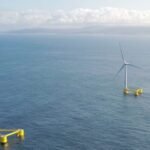New research from Dartmouth College has revealed that permafrost, the frozen soil found in the Arctic, is the primary factor shaping the region’s rivers. The study, published in the Proceedings of the National Academy of Sciences, found that permafrost causes Arctic rivers to be confined to smaller areas and shallower valleys compared to rivers in warmer climates.
Permafrost is a layer of soil that remains frozen for two or more years at a time. However, it is also a fragile reservoir of carbon. As climate change weakens the permafrost, the researchers estimate that every 1.8 degrees Fahrenheit (1 degree Celsius) of global warming could release as much carbon as 35 million cars emit in a year. This is due to the expansion of polar waterways and the subsequent thawing of the soil.
The study’s lead author, Joanmarie Del Vecchio, explained that the Earth’s surface is in a constant battle between processes that smooth the landscape, like hillslopes, and forces that carve it up, like rivers. The outcome depends on whether freezing or thawing occurs. If hillslopes win, the carbon trapped in the soil will be buried. However, if river channels win, a significant amount of carbon will be released into the atmosphere, leading to a feedback loop of warming and increased greenhouse gas emissions.
To understand why Arctic watersheds have smaller river areas compared to warmer climates, the researchers analyzed data from over 69,000 watersheds across the Northern Hemisphere. They found that permafrost played a crucial role in shaping Arctic watersheds, resulting in deeper and steeper river valleys and less channel occupation within the surrounding landscape.
Del Vecchio noted that regions with larger river channels are warmer and have less permafrost. This suggests that more water is required to carve valleys in areas with permafrost. The study also revealed that permafrost stores vast amounts of carbon in the frozen soil. The researchers combined the carbon stored in permafrost with the soil erosion caused by thawing and river spreading to estimate the potential carbon release due to climate change.
The Arctic has already experienced significant warming, and scientists estimate that gradual thawing of permafrost could release billions of tons of carbon dioxide by 2100. However, the rapid pace of current warming in the Arctic raises concerns about the landscape’s ability to adapt. The researchers emphasized the need for further understanding of Arctic landscapes and their response to climate change.
Del Vecchio mentioned that sediment cores from the Arctic’s past have shown extensive soil runoff and carbon deposits, indicating a much warmer region. However, the modern Arctic’s response to accelerated warming remains uncertain.
In conclusion, this study highlights the dominant role of permafrost in shaping Arctic rivers and its potential for carbon release as it thaws. The findings emphasize the urgent need to address climate change and protect fragile ecosystems like the Arctic.




